Product-Led Growth: Why You Should Up Marketing With PLG and How

Is spending money on sales personnel an investment or a cash drain?
Getting new customers is so valuable that marketing and sales comprise around 10 to 40% of an average business’s gross revenue. That’s approximately $20,000 annually if the typical American small business is our benchmark.
What if I tell you there is a way to spend that 20 grand on developing your core business without sacrificing your customer acquisition capability?
Enter the world of product-led growth.
This method of getting more customers does away with most of the sales talk and lets your product or service do the talking. Product-led growth is so effective it has led to an increase in the market value of many multi-billion dollar companies, like the ones below.
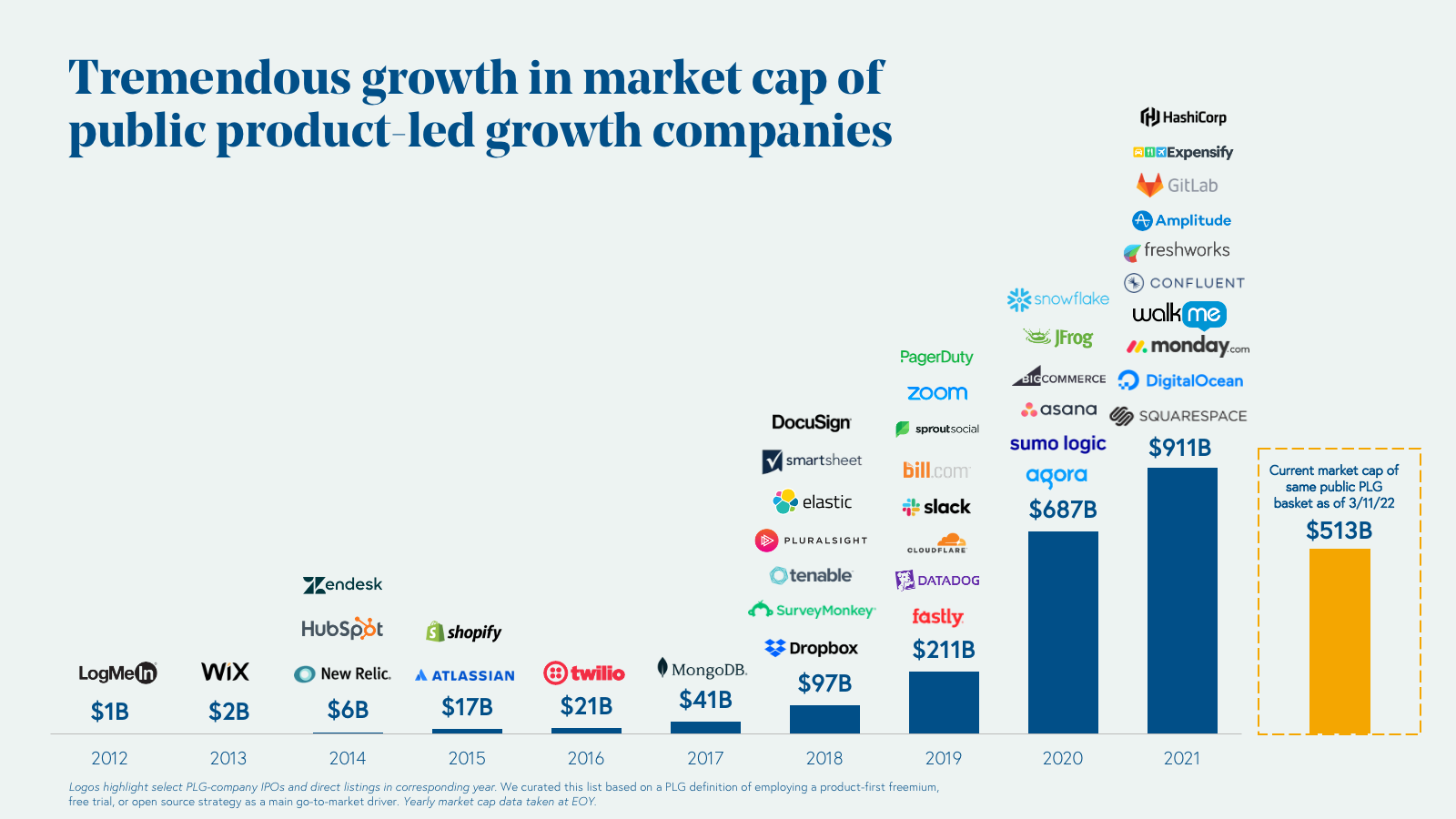
Source: Bessemer Venture Partners
Curious how this is possible? Read this article to learn more about this new way of growing your business.
What is product-led growth (PLG)?
Product-led growth is a business strategy that aims to increase income and customers through high-quality products or services instead of huge marketing or sales budgets.
A product-led company makes its product or service so that it attracts new customers for some time without much investment in advertising or sales calls.
How did product-led growth start?
The software industry gave birth to PLG.
In the 1980s and the early 1990s, people had to talk to a sales team member to acquire software through disks and CDs.
By the late 1990s, many websites enabled people to download and install software on their own. This was a turning point in the history of PLG since software products could by then reach its market without depending too much on sales reps.
Mobile and web apps further fostered the growth of the PLG business model. Through the freemium model, many of these apps are FREE up to a point. This app business model and other cutting-edge features have turned apps into their own sales reps or marketing billboards.
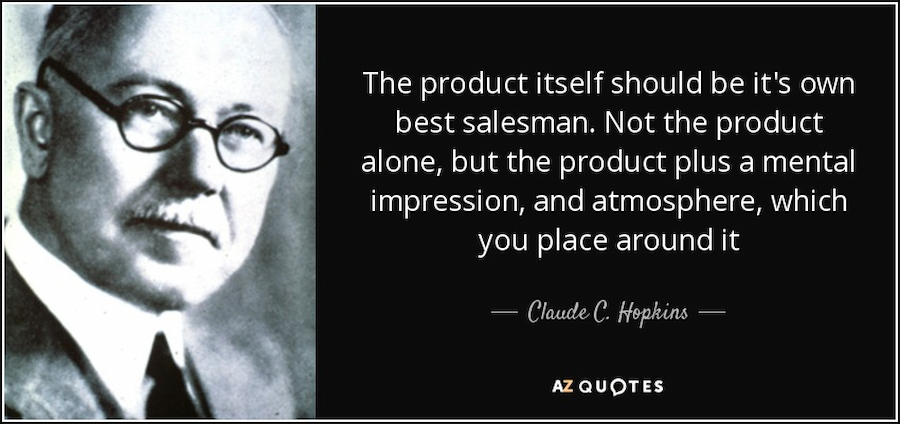
Source: AZ Quotes
Now that you know how PLG evolved over time, it’s time to learn the benefits of implementing this business model.
Why pursue product-led growth?
Our product strategists have implemented PLG in many of our custom app development projects for many reasons, including the following:
- More cost-efficient organizations
- Bigger room for effective scaling
- Products become more user-friendly
Let’s have a look at each of these benefits.
More cost-efficient organizations
Product-led growth mostly involves businesses that make digital products. Many of these products have proven the effectiveness of digital sales channels like websites, social media pages, etc.
These online channels could make sales teams leaner and more efficient, even in some non-digital industries. For example, in an increasingly digital business world, many sales teams in different organizations have either downsized or upgraded their marketing tools to adapt. Either way, this leads to a lower customer acquisition cost (CAC) due to higher company revenue per employee or more customers acquired per sales employee.
Conversely, the traditional sales-led growth model usually leads to a higher CAC and inefficient use of financial resources.
A lower CAC means more money can be saved or reinvested into value-adding endeavors like improving product quality, employee wellness benefits, etc.
Bigger room for effective scaling
Scaling is all about increasing revenue at the least possible cost.
The product or service is the main salesperson or advertisement in the product-led growth model. Hence, business income tends to be higher and expenses lower. The lower costs are mainly due to the higher efficiency of the sales teams mentioned in the previous section.
In the case of the famous videoconferencing tool Zoom, the company was even able to do without a sales team for the first two years of its existence, thanks to PLG. For those critical formative years, Zoom was able to save marketing money and focus on improving its product.
Effective scaling, however, is not just about minimizing expenses. Scaling could also mean investing some money to gain a massive financial advantage.
Bain Capital has cited in its studies that SOME companies spend more on marketing, research, and development when implementing PLG. But, these product-led businesses EARN MORE PER DOLLAR spent on R&D and marketing compared to non-PLG companies.
Products become more user-friendly
The PLG business model is designed in such a way that users can easily provide feedback to help businesses improve their products. You will learn more about this in the penultimate section of this article.
The more easily businesses know what users think of their products, the more quickly they can improve the usability of the products.
An improved user experience is critical in driving income for many businesses. For example, a healthy app-based profit mostly depends on a large pool of loyal users. Given that poor UX is a significant reason why users delete apps, app businesses ensure that their applications are easy to use so they can enjoy financial sustainability.
Now you know how PLG benefits businesses, it’s time to discover how to make it work.
Building better businesses through PLG
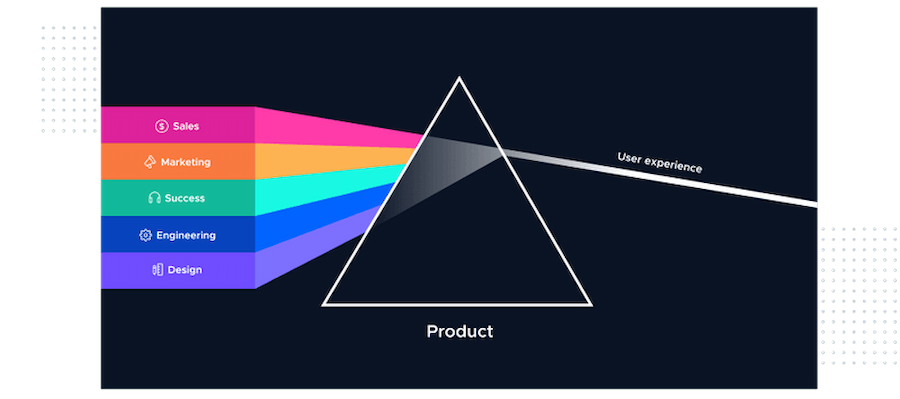
Source: Product Led Growth Collective
Pivoting towards the PLG model requires changing organizational culture and reimagining how you offer your products or services. Our app business experts advise the following product-led growth strategies in particular:
- Vie for viral status
- Make people see the value of your business sooner
- Give your product or service “ears” to listen in on the market
Let’s have a closer look at each.
Vie for viral status
You probably heard of viral videos – those funny or special bits of footage that have gained international fame in seconds.
You want to know what makes these videos popular so quickly? One word. Shareability.
In the PLG way of doing business, products are easily shareable or spreadable to as many people as possible. This is how PLG markets products without too much interference from sales teams. It is the users themselves who become the sales reps.
Cloud storage service provider Dropbox is a master at product shareability. The company’s PLG formula is simple: if users want extra megabytes of online hard disk space, they must share Dropbox with their friends. Check out the screenshot below to see what I mean.
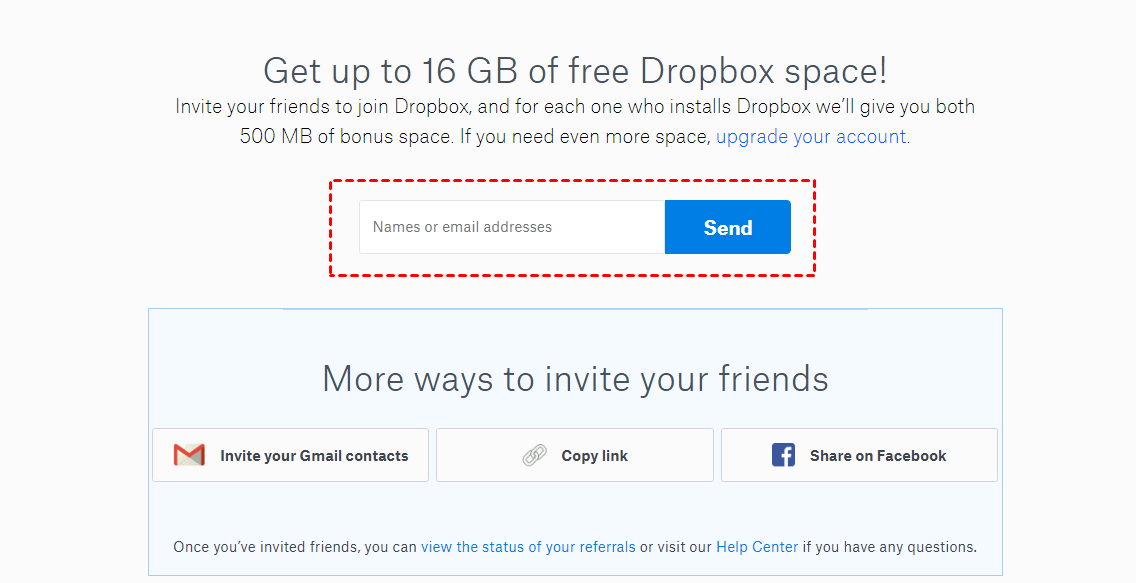
Source: Cbackup.com
In effect, Dropbox is taking advantage of word-of-mouth marketing through incremental feature enhancements. This is PLG in action. If you make your product easily shareable like Dropbox, you’re on your way to PLG-driven success.
Make people see the value of your business sooner
I am not talking about sweet-talking people into seeing how great your product or service is. Instead, I am referring to using free samples to move people closer to doing business with you.
Some car dealers and cheese makers know this principle well. So they let people test drive cars or sample their culinary creations to attract more paying customers.
In tech, freemium apps allow users free access to basic features and charge only for the more advanced ones. For example, I recently downloaded a free radio app to my phone. I don’t have to pay a cent to use this app. However, I must shell out cash if I want to eliminate in-app ads.
Free samples or the freemium model are sometimes more effective than advertisements or sales pitches because they make your products or services more palpable. Hence, your potential customers will better see and feel how your offerings add value to their lives.
Turn your product or service into your market listening post
Nowadays, it’s not enough to merely sell things or provide services.
You have to know what customers or users think of your offering, then improve your product accordingly. Pitch has a great playbook you could follow to carry this out successfully. The software company has a webpage called Feature Requests. Here, users can suggest what features they want to see in Pitch’s next version of its collaborative presentation-making tool.
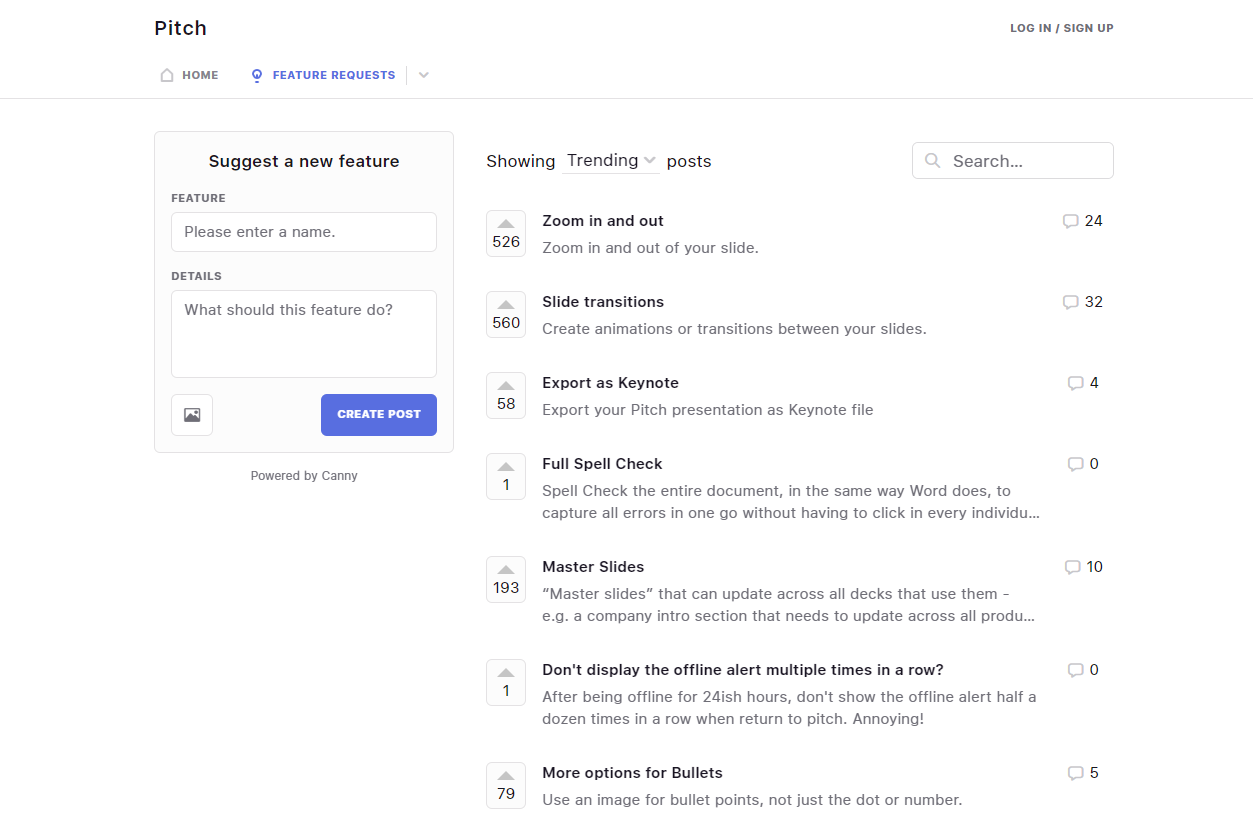
Source: Pitch.canny.io
For other tech businesses, more advanced systems are available to implement product-led growth. As an example, app analytics tools indicate which parts of apps get more taps and which ones don’t get much attention. This guides app businesses on what features need improvement.
Apps can also provide useful feedback to non-digital businesses. For example, through the app we helped develop for MUCUDU, people can find the most awesome drinking venues in their locality through ratings left by bar patrons. You can read our case study to learn how the MUCUDU app has provided select Australian bars with a feedback mechanism to determine user satisfaction.
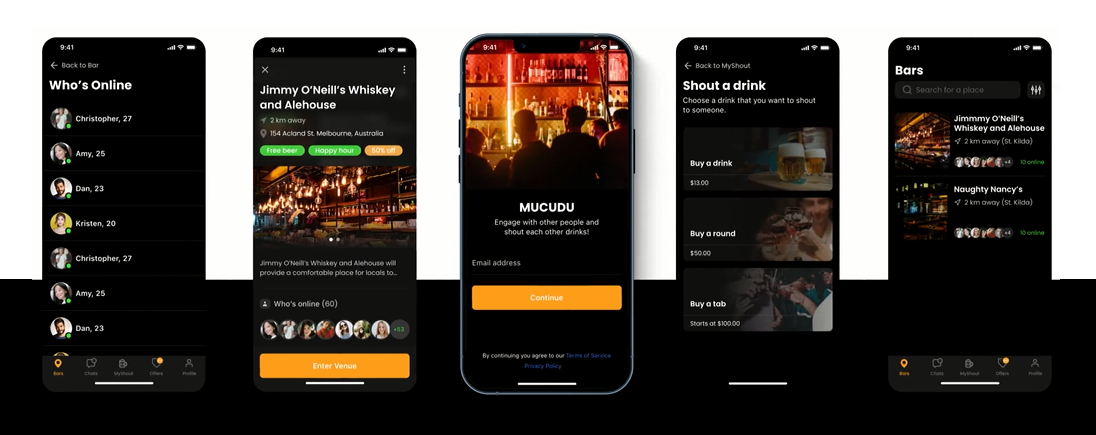
In an age where millions of online businesses exist, competition is pretty tough. Hence, customer success has become a top priority. Customer success ideally aims to prevent customer or user problems from growing too big. This is only possible if you have a listening post on your customers or users.
Proactively listening to customer feedback also enhances a key metric called customer lifetime value (CLV). In a nutshell, CLV is all about maintaining customer loyalty so a business can earn from each client for a longer period. Therefore, watching out for customer feedback increases a company’s profit.
Much has been said about how to execute a product-led strategy. If you’re wondering whether all these theories actually work, read the next section to discover companies that succeeded through product-led growth.
Some successful PLG businesses
Here are some product-led companies that have enjoyed enormous success:
ClickUp
Remember what I said about constantly monitoring user feedback? ClickUp is especially good at this.
This brand specializes in a productivity platform that is accessible through a web browser. Despite minimal reliance on sales personnel and marketing, the company has grown to a value of $4 billion. Big names like Netflix and Google even use Clickup.
Instead of massive investments in sales and marketing teams, Clickup invests time and effort in constantly monitoring user feedback in places like online forums and social media communities.
Calendly
The $3 billion corporation behind this meeting scheduling tool has a unique way of doing PLG.
Its product-led growth is two-pronged. First, whenever a user shares a Calendly invite, the invite markets the tool to the invitee. This person, in turn, can use the tool without paying for many basic features.
Plug cash leaks through PLG
In the era of rapid digitalization and fierce competition, having a more scalable and sustainable business model is more important than ever.
Product-led growth is the way for your business to grow holistically in the Internet age. This game plan hits three birds with one stone. PLG minimizes marketing expenses while adding more customers and enhancing the quality of your product or service.
Many businesses can take a page out of PLG. But those leveraging apps have the best chance of succeeding with this growth strategy. We have proven this in our experience transforming businesses from zero to multimillion dollars through high-quality mobile and web apps.
Book a free consultation with us to learn how PLG and apps can help your business or realize your vision more successfully.

Jesus Carmelo Arguelles, aka Mel, is a Content Marketing Specialist by profession. Though he holds a bachelor’s degree in business administration, he also took courses in fields like computer troubleshooting and data analytics. He also has a wealth of experience in content writing, marketing, education, and customer support.


